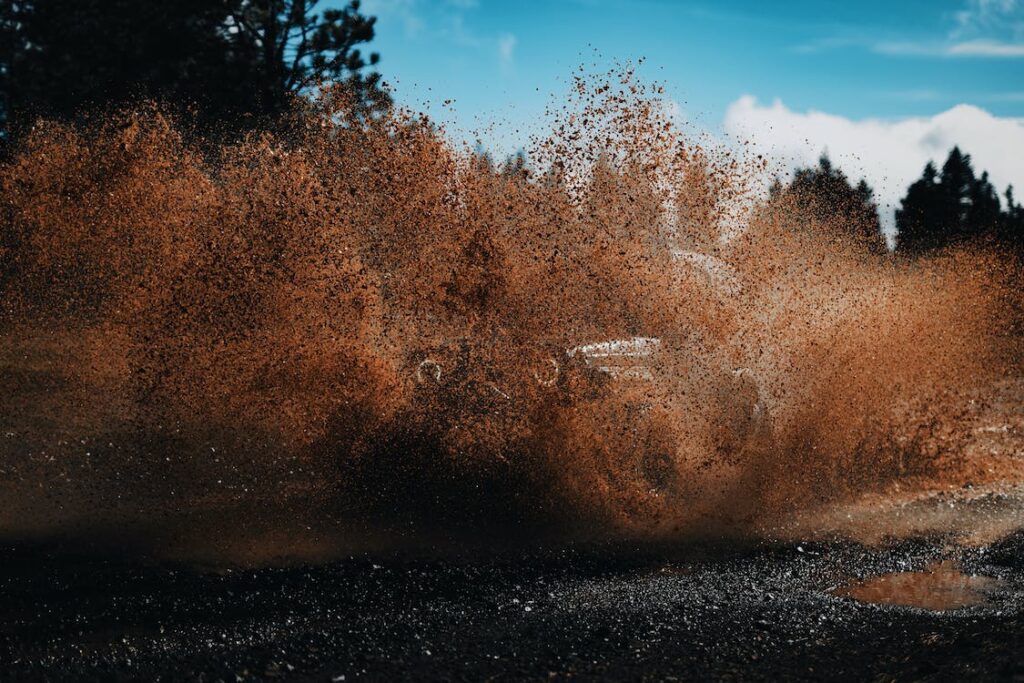All-terrain vehicles are intriguing because they provide access to great outdoor activities. You must, however, be conscious of how it affects the environment.
Maintaining this natural environment and keeping it open for future off-road riding is crucial if you enjoy the adrenaline rush that it brings. You can do many things while riding your dirt bike to reduce the environmental impact of ATVs.
There are some ways to reduce the impact of your rides, whether you’re tearing through the mud or racing along wooded trails. Follow these 7 tips for eco-friendly ATV riding to help you preserve the environment.
7 Amazing Guidelines for Eco-Friendly ATV Riding
1. Check the Weather Forecast

You’d be surprised at how much planning ahead can improve your overall riding experience, even though this may seem absurd.
It would help if you looked up the weather forecast before leaving. Try to stay away from muddy trails. Were you aware that a lot of damage occurs when trails are wet and soft?
Usually, the hour following a snow or rain shower is the most vulnerable. Avoid waterways without bridges or shorelines to ride on by planning your route carefully. Choosing paths with rugged, durable terrain would be best whenever possible.
2. Go for an Electric ATV
You can still travel at exhilarating speeds on an ATV without using gas and emitting harmful toxins into the atmosphere. It is imperative to lessen the significant amounts of toxic chemical pollutants that an ATV generates to benefit the ecosystem and the overall health of ATV riders.
Electric vehicle manufacturers have lines of more fuel-efficient models that emit fewer emissions and can handle work and play. Your electric ride sound is made up entirely of natural sounds and the ground rather than the rumble of an engine.
3. Use Designated Paths

Adhering to designated trails is another way to reduce your ATV’s impact. Even if the tracks are muddy or covered in snow, you should stick to the established routes despite the temptation to stray from them.
The trail will become wider if you avoid wet areas while riding. This causes tracks to crook and further erosion. Going off the assigned path can further pressure the frost into the earth and destroy vegetation when it snows.
You won’t have to worry about causing further damage. They clear designated trails to avoid wildlife and plants, including those at an ATV or national park. To prevent enlarging a path, it may also be beneficial to ride in the center of it.
4. Tread Carefully
Another strategy for reducing ATV environmental impact is to follow proper trail etiquette. The first thing you should do when riding your ATV is momovelowly and deliberately.
Additionally, consider purchasing less-aggressive wheels with lower pressure. These tires won’t erode the soil or destroy the vegetation. Not to mention that you shouldn’t need aggressive tires if you stay on designated trails.
5. Link up an ATV Club

Joining a group of like-minded off-road riders is a great way to engage in more sustainable activities. Find a group dedicated to promoting conservation and becoming more environmentally friendly.
For instance, the nonprofit organization Treads lightly works to strike a balance between the needs of ATV enthusiasts and the requirement to preserve a healthy ecosystem.
Organizations like this provide educational materials, programs, practical exercises, and events that support ethical, environmentally responsible offroading.
6. Avoid Littering
Riding a dirt bike can last all day, and it often includes time spent with friends and a sweet treat on the trails. Just make sure to pack up everything you brought.
Carry some trash bags with you if your quad has storage so you can tidy up your waste when you’re done. Littering can result in a hefty fine, particularly on national parks and forest trails.
Additionally, be sure to dispose of specific ATV parts and fluids in an appropriate, environmentally friendly manner.
You should never throw batteries, oil, and other hazardous materials because they can harm the environment. Find out which local shops, like mechanics or recycling facilities, will take used engine oil or ATV lead-acid battery cells.
7. Follow up on Your ATV Upkeep
No matter what kind of all-terrain vehicle you have, maintaining your dirt bike is a convenient way to lower emissions, toxic gases, and toxins while you ride.
Your off-road vehicle’s emissions can be decreased by simply performing the recommended maintenance as instructed by the manufacturer. After a ride, you should wash your ATV to prevent noxious weeds from moving from one trail to another.
If you use diesel or gas to power your ATV, you might want to use synthetic oil. In addition to extending your engine’s life cycle and performance, it will result in less oil waste.
Final Word
You shouldn’t feel guilty riding your off-road vehicle on the trails. You can make your outdoor rides enjoyable by following these 7 tips for eco-friendly riding.
All the best!














